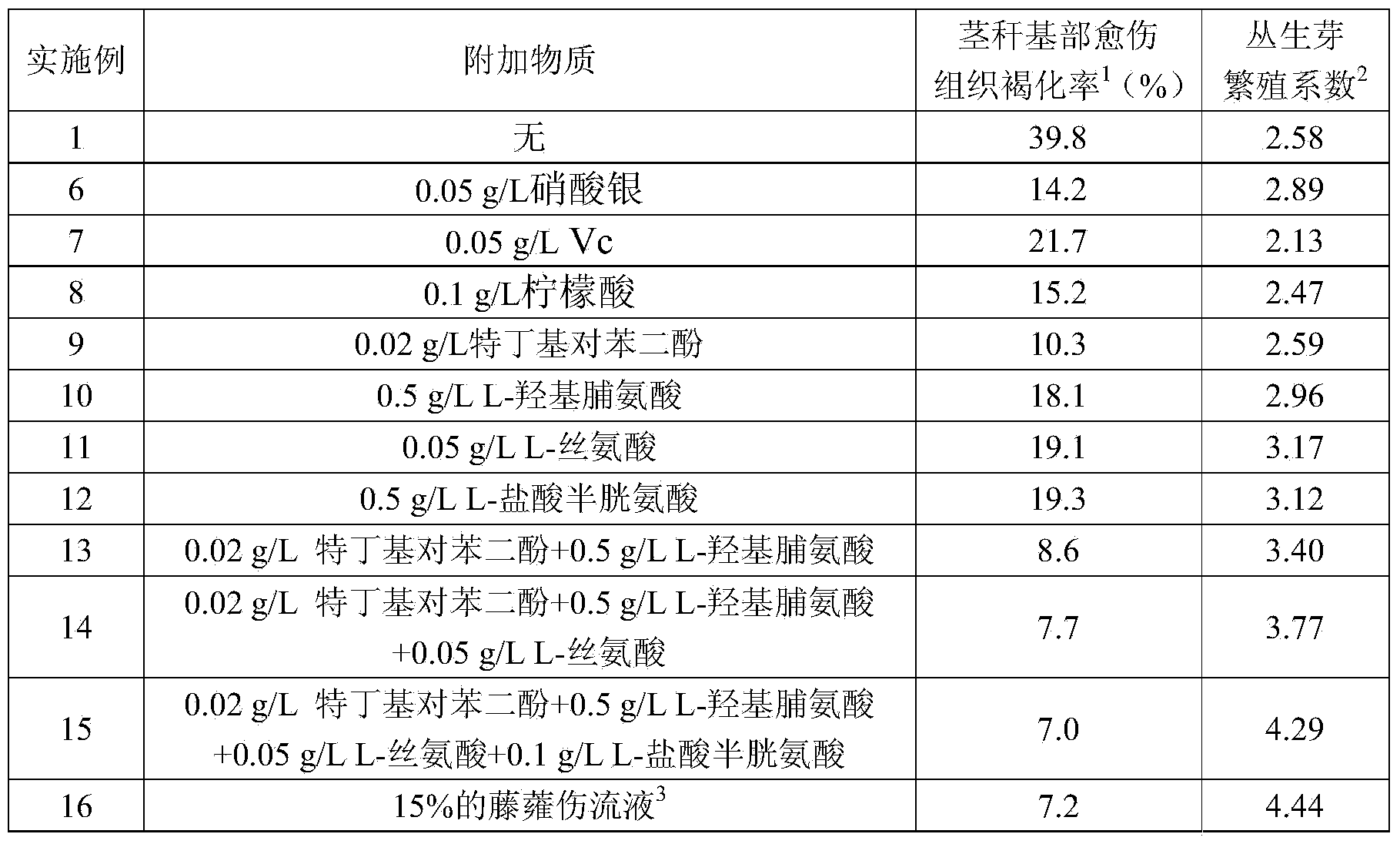Aponogeton lakhonensis tissue culture method
A tissue culture and rattan technology, applied in the field of plant tissue culture, can solve problems such as insufficient supply of vegetables in off-season, and achieve the effects of reducing pathogen damage, saving space, and increasing the number of plants
- Summary
- Abstract
- Description
- Claims
- Application Information
AI Technical Summary
Problems solved by technology
Method used
Image
Examples
Embodiment 1
[0042] (1) Material collection: take Changsha rattan as the experimental material, take the main rattan of rattan in the field from 7:00 to 8:00 in the morning, remove the leaves and petioles of rattan with scissors wiped with 70% alcohol, and rinse under running water For about 5 minutes, cut the rattan cane into 3-4cm long stem segments, and ensure that each stem segment has at least one ungerminated axillary bud.
[0043] (2) Disinfection of explants: put the stem segment into a nylon mesh bag, put it into a triangular flask, and disinfect it with 70% alcohol for 30 seconds on the ultra-clean workbench, discard the alcohol, and rinse with sterile water once , and then sterilized with 5% sodium hypochlorite solution with Tween 20 or 0.1% mercuric chloride solution with Tween 20 (drop 50 μL Tween 20 into every 100 mL of disinfectant solution) for 6 minutes, discard the sodium hypochlorite solution or mercuric chloride solution, Rinse with sterile water 3-5 times. Use sterile...
Embodiment 2-5
[0049] In Example 2-5, the sterilized rattan explants were respectively inoculated in the primary culture medium with ribonucleic acid yeast at a concentration of 0.1, 0.3, 0.5, and 0.7 g / L, and other operations and conditions were the same as in Example 1. After 7 days of culture, the growth of the explants was observed, and the results are shown in Table 3. It can be seen from Table 3 that the beneficial effect of adding ribonucleic acid yeast is mainly that ribonucleic acid yeast can significantly reduce the yellowing rate of the vine explant stem, the growth rate of the axillary buds is relatively faster, and the growth potential of the plant is more vigorous. When the concentration of ribonucleic acid yeast is greater than or equal to 0.5g / L, there is no significant difference in the growth effect of explants. Considering the production cost, we choose to add 0.5g / L ribonucleic acid yeast to the medium.
[0050] Table 3 The results of observing the growth of explants afte...
Embodiment 6-16
[0054] Table 4 The results of observing the growth of explants after adding antioxidants, amino acid mixtures and rattan vine wound fluid in the subculture medium (cultivation time is the result observed after 10 days)
[0055]
[0056] 1--Browning: in the process of plant tissue culture, the explant itself releases brown substances from the surface to the medium, so that the medium gradually turns brown, and the explant also further browns. In the present invention, it refers to the stem Browning of the callus at the base of the culm.
[0057] 2--15% vine root wound fluid: cut off the main stem of the vine root 15-20cm from the ground, insert the cut upside down into a plastic bottle, the wound fluid will naturally flow out from the wound, and the collected liquid is diluted with distilled water to its original state. 15% of the solution can be used after passing through a 0.22μm filter membrane.
[0058] 3--Cluster bud reproduction coefficient refers to the number of clu...
PUM
 Login to View More
Login to View More Abstract
Description
Claims
Application Information
 Login to View More
Login to View More - R&D
- Intellectual Property
- Life Sciences
- Materials
- Tech Scout
- Unparalleled Data Quality
- Higher Quality Content
- 60% Fewer Hallucinations
Browse by: Latest US Patents, China's latest patents, Technical Efficacy Thesaurus, Application Domain, Technology Topic, Popular Technical Reports.
© 2025 PatSnap. All rights reserved.Legal|Privacy policy|Modern Slavery Act Transparency Statement|Sitemap|About US| Contact US: help@patsnap.com



